Facade luminaires: the choice of architectural lighting for a building
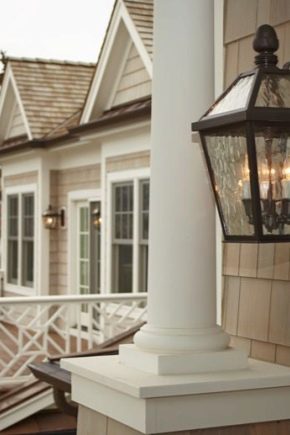
Modern landscape design is impossible without lighting. Facade luminaires are the best architectural lighting technique for a building. They are functional and feature a wide range of designs. This makes them popular among buyers and professional designers.
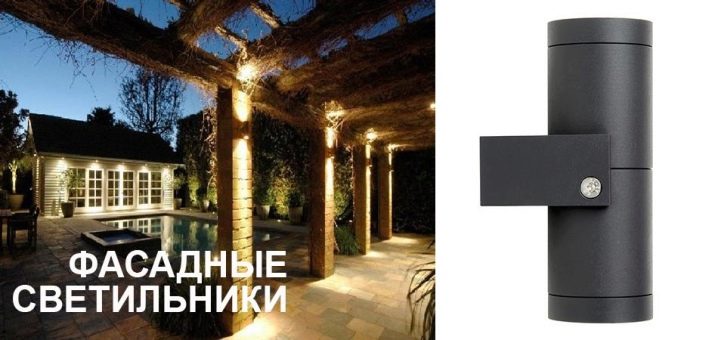
Peculiarities
Facade lamps are street appliances, through which the house is illuminated from the outside and the surrounding area. Depending on the types, they can be multifunctional and differ in the principle of operation. The priority is for devices that emphasize a certain style of the interior, while illuminating the desired area in the required volume. In addition, they should look harmonious in landscape design.
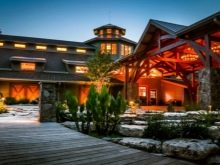


These are lamps and devices that are mounted on walls and roofs. Such devices include ground and pendant type lanterns. A feature of modern lighting is the use of RGB backlighting. It allows you to add a touch of originality and variety, replacing the traditional glow with a colored one.
Such illumination looks unusual and elegant. If desired, you can change the shade of the luminous flux.
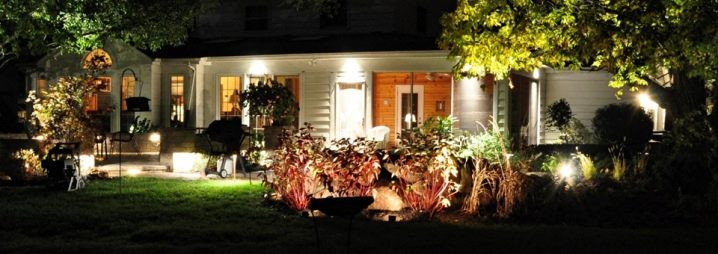
Views
All existing types of such devices can be conditionally divided into flood light devices, local and hidden lighting.
- Floodlights are halogen or LED models with a bright and directional luminous flux. By the type of location, they are panoramic and angular.
- Built-in types include wall sconces in the form of lanterns.
- Floor products belong to the class of double-sided luminaires. These sconces are functional and are suitable for lighting entrance lobbies, adjoining areas, as well as signage signs. They can be used to fill the main space with light, in the design of a veranda or terrace, and to illuminate small sections of the facade.

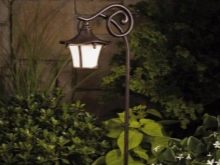
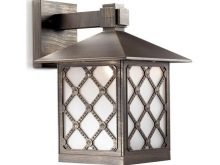
This type involves complex installation and maintenance. With the help of these models, you can effectively emphasize a certain style of landscape design. These include forged lamps or analogs with closed shades and grilles.
In addition to these varieties, in-line or tape-type products are popular options. These are special LED flexible strip lights. Backlighting with LED strip allows you to designate architectural elements, highlight the contours of the roof, and create an interesting pattern. It can be hidden behind the cornice, stucco molding, elements of the entrance group.
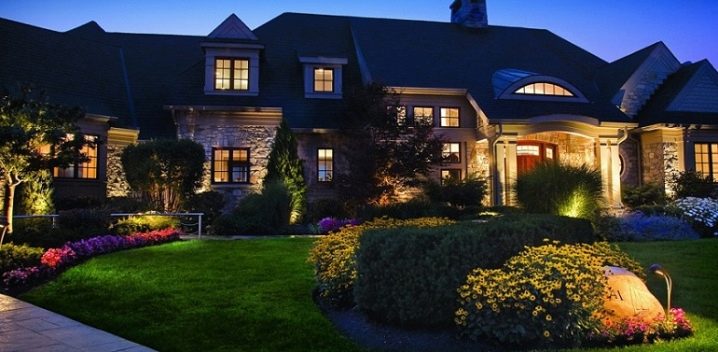
Ground varieties are fixed near the building. Most often, a concrete base, tile or asphalt becomes the basis. Such models are protected from moisture and accidental mechanical damage. During installation, you can give them the desired angle of inclination of the light flux. This allows you to create a special light composition. Lighting sources can be of different shapes (from retro and classic models of lamps to ultramodern novelties or products in the form of figurines, as well as overhead counterparts).

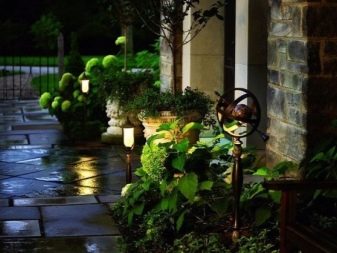

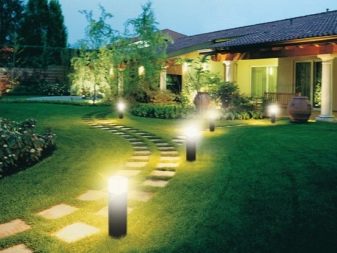
Private house projects
In addition to the local, hidden and flood look, the luminous flux can be contour, artistic and architectural. Stylists can offer the client a design in the form of color dynamics, which allows them to play with the effects of light shadows, change the strength, temperature and shade of the light stream. Someone will love neon or laser lights. Others will love the festive New Year's decor.
In any case, the issue of lighting the building and the local area is approached thoroughly even at the design stage of the building. The exterior should look bright and modern. To do this, you can use spotlights or spot placement of lamps on the facade.
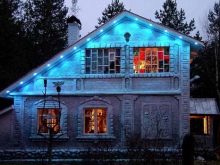
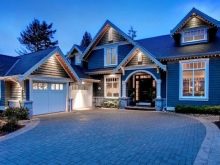
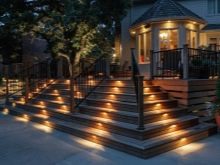
In the first case, the project provides for flooded lighting of the facade. In the second, the lighting is artistic.
With its help, you can designate the features of the architectural elements of the building. For example, you can accentuate the projections of the columns with external lighting, illuminate the space above the windows along the perimeter of the cottage. In this case, the best project would be the option using combined backlighting. For example, walls can be marked with down-light fixtures with adjustable tilt angle. The roof contour can be highlighted with a flexible LED strip.
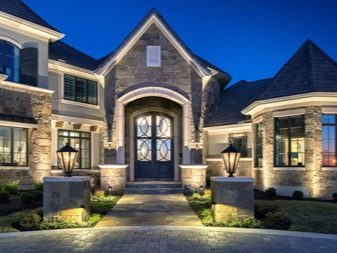

LEDs look good with neon devices. A good option would be a combination of bollards, strobe and color illumination. For the blind area of the house and porch, it is better to choose distributed light fixtures. The main rule of harmony is the compatibility of all light sources with each other and the general concept of landscape composition.
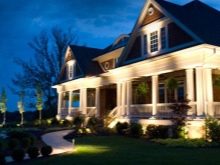
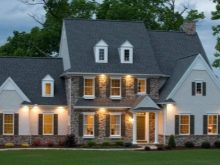

Long brackets should be avoided for architectural outdoor lighting to be appropriate.
Such products spoil the design, so today they are extremely rare in facade lighting projects. Regardless of the type and number of devices used, the project provides for compliance with energy consumption standards, efficiency, convenience and safety of the used facade lighting.
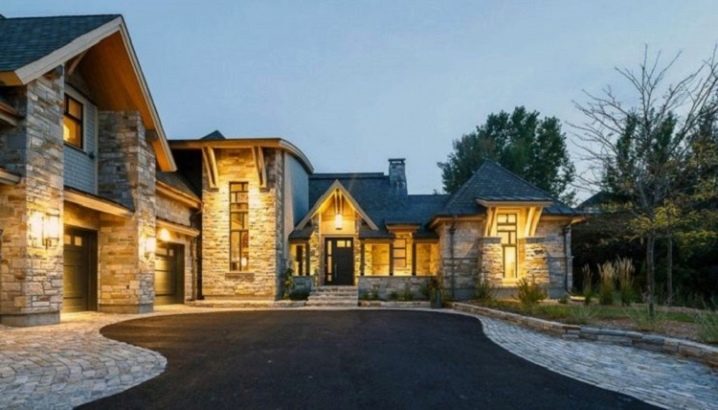
How to organize yourself?
In fact, creating façade lighting is not a difficult process if properly prepared. After creating a drawing with markup, they buy the necessary lamps and accessories, mount them according to the project.
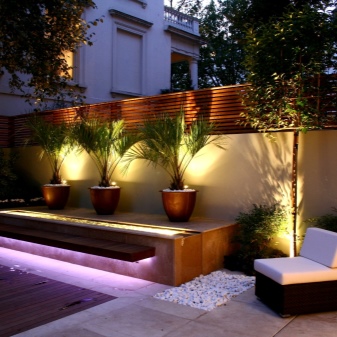
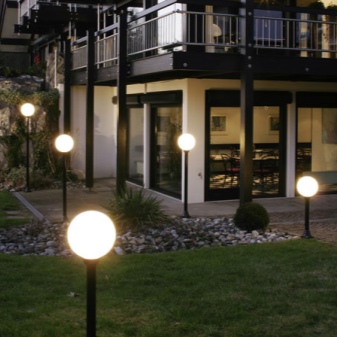
Calculation of materials and components
The choice of lighting devices depends on the design features of the facade. Lanterns can have a flat and curved shape, inclined glazing, etc. When combining luminaires into groups, they start from the peculiarities of their placement. In order for the illumination level to be optimal, preliminary calculations are made.
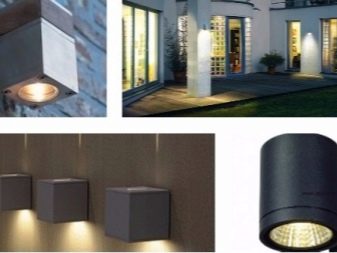
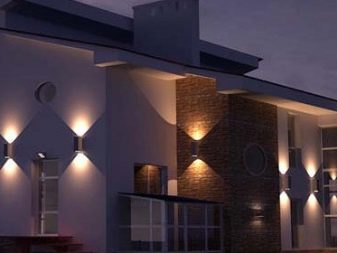
If you ignore this aspect, the light can be dim or too bright, irritating to the eyes. To do this, take into account the power, the purpose of the equipment, the type of fixing the fixtures and the method of their installation.
If it is necessary to use a strip illumination, the length of the contour that is planned to be illuminated is measured and a small allowance is added. It is necessary for cutting in specially designated places. After the calculations, they choose a tape with the required density, the number of rows, the power of the diodes and buy it in one piece.
The number of wall-mounted appliances depends on the wiring locations and installation possibilities. Usually, two-sided decorative devices are located at the entrance.

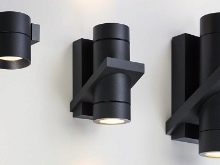
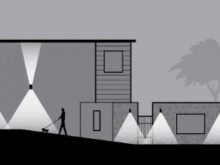
The types and number of components (fittings) for assembly depend on the model. These can be chains, cartridges, wires, fasteners, tubes, bowls, cartridge cases, earrings, straps, glasses. They are selected together with the main devices. The wire for connecting the power is taken with a margin.
To find out exactly the required number of lamps and related materials, you can use special design programs. However, in reality, it is easier to walk around the site, inspect where and how the lamps will be located.
After determining their number, they begin to measure the distance from each other and the power source.This will give a more realistic picture. It is easier to buy lamps immediately with a complete set.
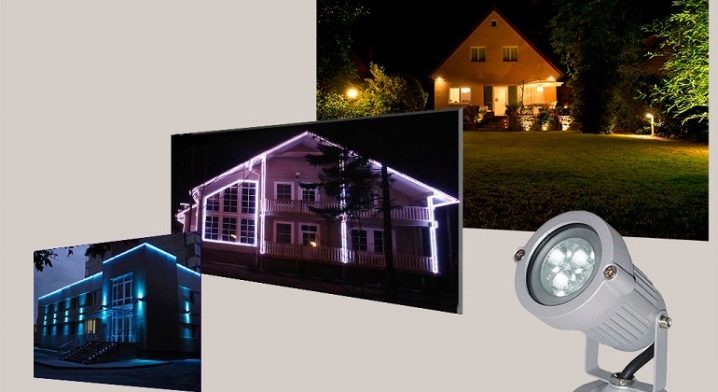
Schemes and drawings
When drawing up a diagram, it is necessary to take into account the size of the illuminated space. Moreover, it should not intersect with architectural elements (awnings, canopies). They take into account the structural features of the structure, the presence of the power grid and voltage, relying on the budgetary possibilities. The main power source, according to the diagram, is the input distribution device.
Electric lighting of the facade is carried out by means of a power cable equipped with PVC insulation. The outdoor lighting cable is laid over fireproof building structures. They carry out measures for grounding and lightning protection.
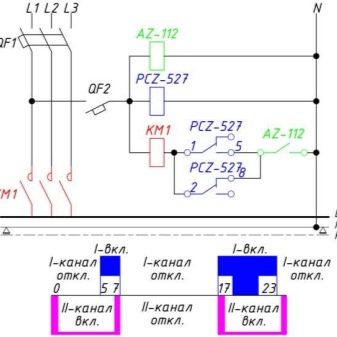
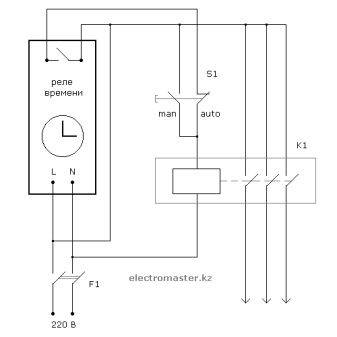
The most economical outdoor lighting scheme is a time relay project. With its help, it is possible to save up to 40% of electricity, since it turns off at night.
For its implementation, a two-channel astronomical relay PCZ-527, a photo relay with a sensor, automatic switches and a contactor are used. The contactor is used to switch the load, it controls the relay and the photo relay. The circuit often includes a timer that is configured for different operation of the lamps. If desired, the control can be manual.
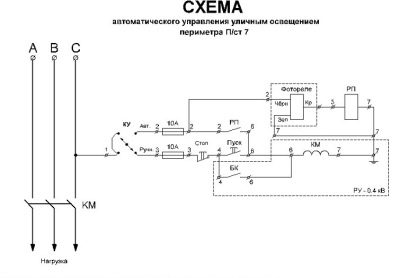
How to connect?
After the project has been created, the lamps and all the equipment have been purchased, you can proceed to the installation of the lighting system. For this, a ready-made project scheme is used. Lamps are placed along it, they are fixed in the right places. The location depends on the chosen lighting option, as well as the installation method. In the case of background placement, it is necessary to maintain a distance of at least 30 cm from the main structure.
If it is necessary to perform flood lighting, lighting devices are installed at the highest point of the local area. After the luminaires are mounted in their places, cable lines in a corrugated or metal pipe are brought to them. Packing in corrugated sleeves will ensure reliable and safe operation of electrical wiring. Wiring is carried out with a rubber-insulated cable.
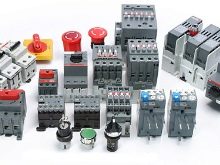
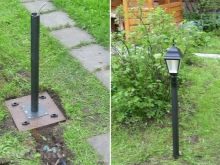
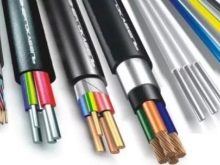
If conducting a wire in a special channel is impossible, it is thrown through the air at a height of at least 3 m above the garden paths. The light of the appliances should not fall into the windows of neighbors. The intersection of streams with nearby lamps is excluded. For this reason, it is necessary to remove them from each other. The switches are located in places protected from precipitation.
It is advisable to use copper wires, as they are less susceptible to mechanical stress. Each luminaire is grounded. For an underground line, a triple-insulated cable is used.

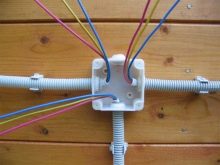
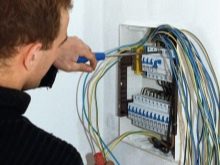
When laying PE pipes, they protect the wire from damage by making a substrate under it of fine gravel or sand 10 cm thick. A signal tape is laid in the trench. If you accidentally dig it, it will indicate the location of the wiring.
Tips from professionals
When arranging facade lighting, the recommendations of experienced craftsmen in the field of construction and repair can come in handy. For example, lighting devices for architectural illumination of the front of the building should:
- be safe to operate;
- have protection from the weather;
- combine decorative and lighting functions;
- differ in energy efficiency;
- be easy to install and operate.
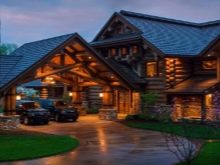
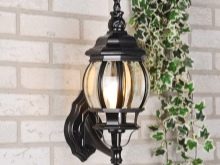
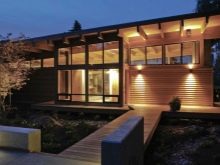
The location of the front luminaires can be symmetrical. Crisp contours give cool tones of light. For the illusion of a close proximity of the object, it is better to use lamps with a warm stream of light. The design should not have more than three different color shades of the glow.
In addition, you can take into account a few more nuances:
- to illuminate a building, it is preferable to buy lamps marked with IP65;
- the body of the device must be aluminum;
- do not connect copper and aluminum wires;
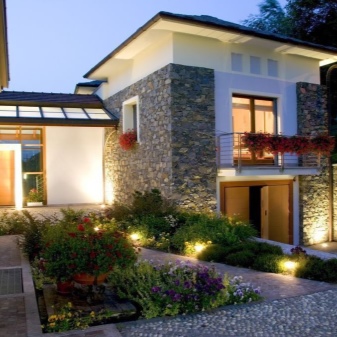
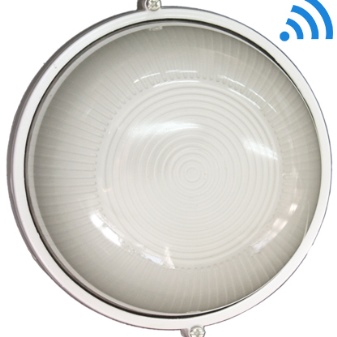
- when choosing LED lighting, it is better to conduct power through a transformer;
- for a greater lighting effect, the light should fall from bottom to top;
- it is better to beat voids and drops with colored illumination using flood light;
- if you don't want to buy aluminum lamps, you can take a closer look at analogs made of polycarbonate or acrylic;
- the plate with the house number and street name is illuminated separately by means of a lamp in the same style as all lighting devices.

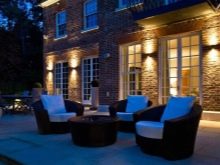

Spectacular examples in the exterior
Examples of photo galleries will help you evaluate the possibilities of lighting the facade.
- Architectural lighting of a country house. Highlighting the facade and the entrance group. Use of lanterns and spotlights.
- Reception of contour accentuation at home. The use of flexible LED strip allows you to mark the roof and window elements.
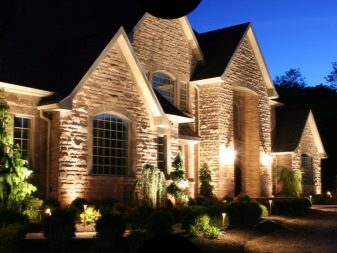

- The use of spot lighting around the perimeter under the roof and in places of structural protrusions.
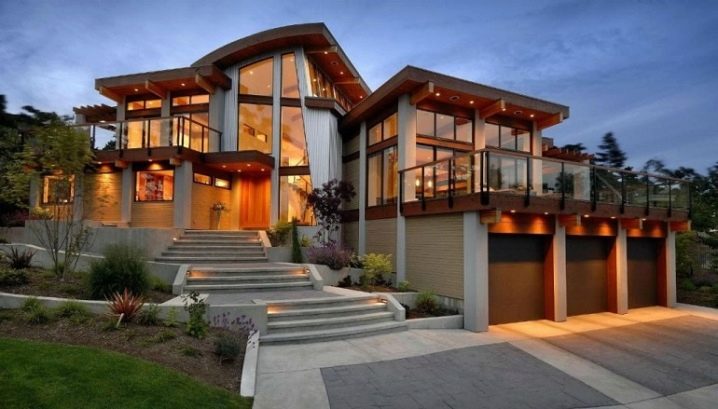
- Wall lamps with forged elements and closed glass shades add a special flavor to the design of the facade.
- The decoration of the outdoor veranda seating area with a lantern makes the atmosphere special. The lamp looks harmoniously against the background of masonry and wicker furniture.
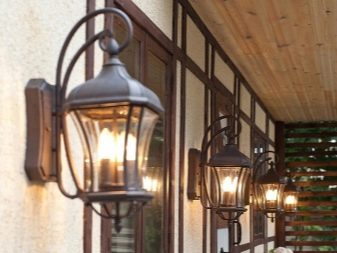
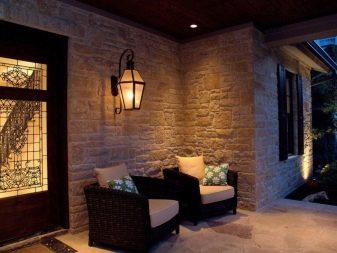
In the next video you will see a presentation of Novotech facade luminaires.













The comment was sent successfully.